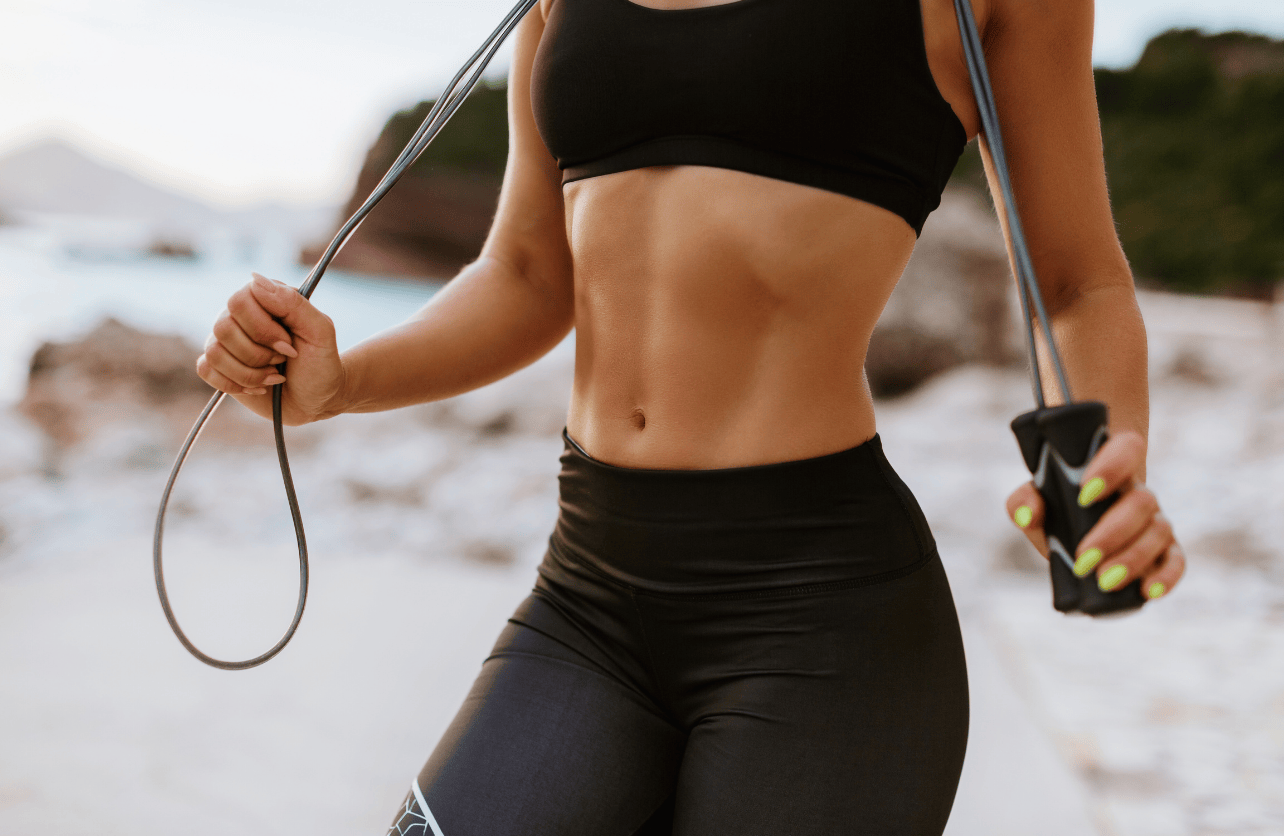What Body Fat Percentage Do You Need to See Abs?

Visible abs are one of the most common goals in fitness, but they remain elusive for many people, not because they’re not working hard, but because abdominal definition is less about crunches and more about body fat. You already have abs; they’re just hidden beneath a layer of fat. The real key to uncovering them is dropping to the right body fat percentage.
Let’s break down what it takes to see your abs, how it differs for men and women, and why the number on the scale isn’t the whole story.
Why Body Fat Percentage Matters
Unlike weight, which fluctuates based on water, food intake, and muscle mass, body fat percentage tells you how much of your body is composed of fat tissue. It’s a more accurate indicator of leanness—and ab visibility—than the scale alone.
When body fat is too high, even well-developed abdominal muscles remain hidden. Lowering fat through a combination of diet, resistance training, and cardio is what reveals those coveted lines.
Ideal Body Fat Ranges to See Abs
While exact numbers can vary based on genetics and muscle development, there are general ranges where abdominal definition typically becomes visible.
For Men:
6–9% Body Fat: This is where full six-pack abs become clearly defined with sharp separation between muscle groups. It’s often seen in competitive athletes or fitness models, but it can be hard to maintain in the long term.
10–12% Body Fat: Abs are visible, though not as shredded. This range is often considered both lean and sustainable. The upper abs and some obliques are usually visible here.
13–15% Body Fat: Slight definition in the upper abs, especially with good lighting or muscle development. Lower abs remain less visible.
16–20% Body Fat: This is an average and healthy range, but abs are generally not visible. The midsection may look soft, even in athletic individuals.
For Women:
16–19% Body Fat: Visible ab definition is possible, especially in the upper abdominal region. This range is usually seen in athletes and figure competitors.
20–24% Body Fat: Depending on muscle tone, some definition in the midsection may appear, but a flat stomach is more typical than clearly visible abs.
25–29% Body Fat: This is a normal, healthy range for women. Abs are not visible here, and the stomach area typically carries some softness.
30 %+ Body Fat: At this level, the abdominal muscles are not visible, and the focus should shift toward overall health improvements before aiming for muscle definition.
Other Factors That Influence Ab Visibility
While body fat percentage is the biggest factor, it’s not the only one. Here’s what else plays a role:
Genetics: Some people naturally store fat around their midsection, while others store it in their hips or thighs. If you’re more prone to belly fat, you’ll need a lower body fat percentage for your abs to show.
Muscle Thickness: Well-developed abdominal muscles will appear sooner, even at slightly higher fat percentages. That’s why strength training is crucial, not just fat loss.
Water Retention: Sodium intake, stress, sleep, and hormonal fluctuations can all affect how lean or puffy your midsection appears.
Lighting and Posing: It may sound trivial, but abs can appear more or less prominent depending on posture, pump, and lighting—just ask any fitness influencer.
Health Considerations
While getting leaner can have benefits—like improved insulin sensitivity and cardiovascular health—there’s a point where chasing extremely low body fat becomes counterproductive.
For Men: Going below 6% can disrupt hormone levels, affect energy and libido, and impair performance.
For Women: Dropping below 15% may impact menstrual cycles, bone density, and reproductive health.
Instead of aiming for an Instagram-worthy six-pack year-round, consider maintaining a healthy and functional body composition that allows you to look good, feel strong, and stay consistent.
Final Thoughts
Visible abs are more about what you do in the kitchen and less about endless ab workouts. For most men, that means getting below 12% body fat. For women, the sweet spot usually lies under 20%. That said, chasing a number without focusing on health, performance, and sustainability can backfire.
The best approach? Build strong, functional abs with resistance training and reduce body fat gradually through a well-balanced diet and consistent activity. Your abs will show up in time—but more importantly, so will long-term strength and health.
Trustworthy Insights for You
With years of combined expertise in online publishing, OvertimeReviews embodies the lessons learned from SEO strategies to paid advertising experiences. We've navigated the highs and lows, and our goal remains clear: to equip readers with comprehensive information they can trust.
